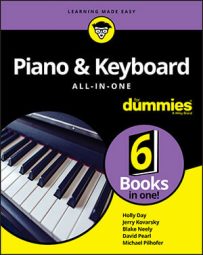The Apple iPad has a growing number of music applications available and is becoming a favorite tool and toy for keyboard players and musicians around the world. To connect your MIDI keyboard to it, you have a few choices.
A new edition of the iPad seems to come out every five minutes, so you may be working with one of several versions. If you have the original or second or third generation iPad, you have a 30-pin connector on the bottom edge of the device. You need an Apple Camera Connection Kit, which plugs into that port and provides a USB jack. Plug in and you’re ready to go.
If you have the fourth generation iPad or the iPad Mini (or even newer models), you have what is called a Lightning connector. These models already come with a cable in the box to connect USB devices to the Lightning jack, so you’re all set.
If your keyboard has only DIN connectors, you need a MIDI interface to use your iPad. But for the iPad, you need a special MIDI interface that supports the unique connectors the tablet uses. A number of companies make dedicated iPad interface cables that support the 30-pin connector of the older models, with MIDI In and Out plugs on the other end of the cable.
For the newer, Lightning-based models, you can buy an adapter cable with the 30-pin jack on one end and a Lightning connector on the other. Then you can use any of the available iOS interfaces. (iOS is Apple’s mobile operating system.)
You can find a smaller adapter that converts the Lightning jack to a 30-pin jack, but this option leaves you with two bulky connectors hanging off your iPad. That setup is risky, both in terms of coming disconnected and of straining or even breaking the connector on your expensive toy. Better to get the cable instead.
No drivers or other setup software is required to use MIDI keyboards and music apps on the iPad. Plug in your keyboard and start up an app, and you’re ready to play and have fun.

